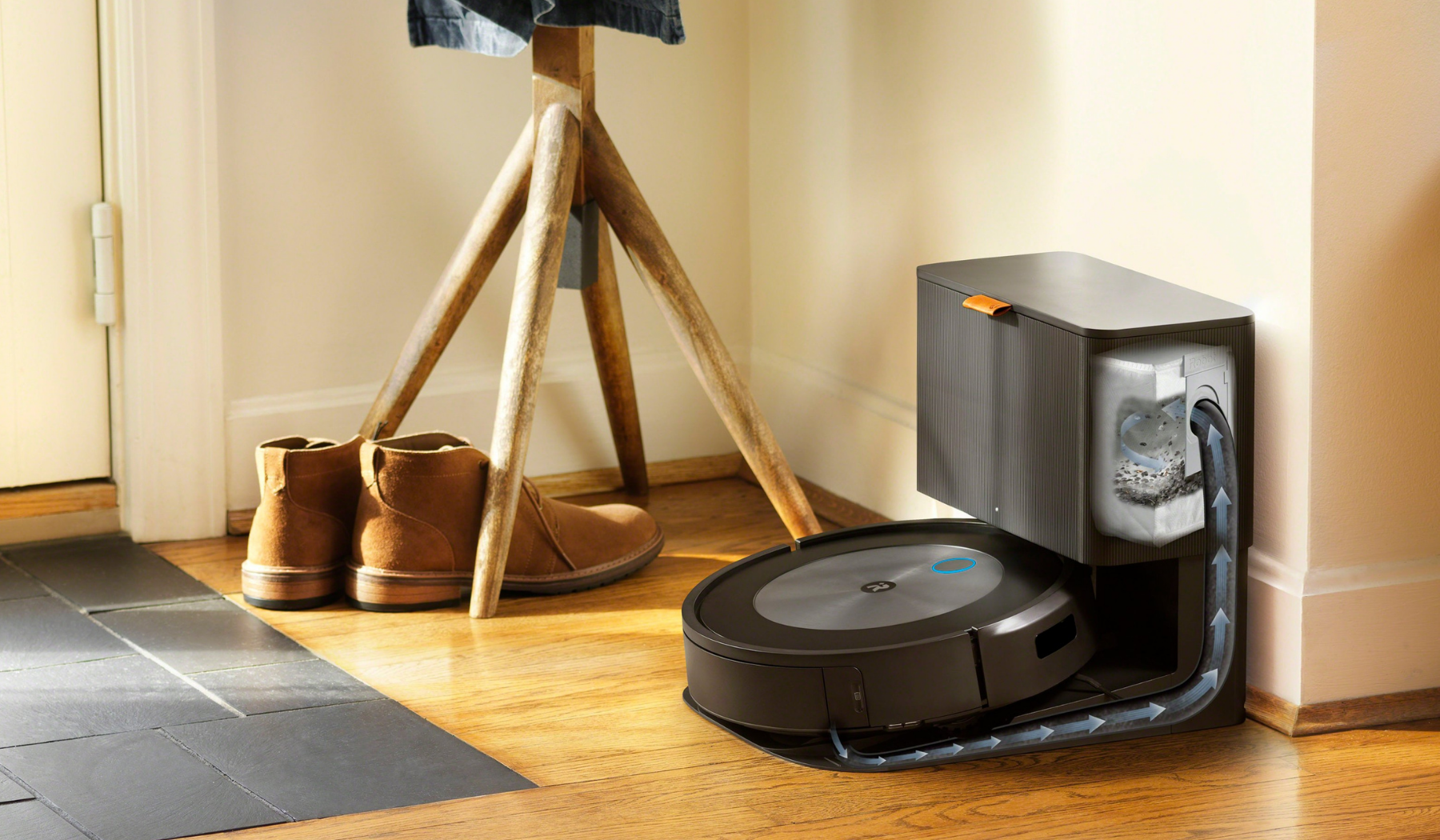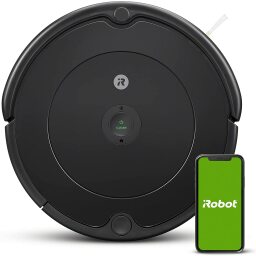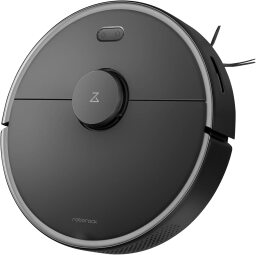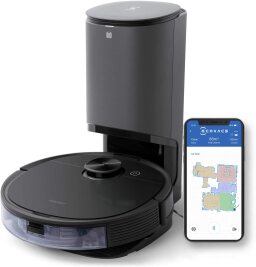
UPDATE: Mar. 9, 2022, 12:15 p.m. EST This story has been updated to reflect current sale prices and availability.
We’ve compiled the best deals on robot vacuums from brands like iRobot, Shark, and Ecovacs. Here are the ones to grab as of March 9:
-
BUDGET PICK: The iRobot Roomba 692 uses a three-stage lifting system, plus Dirt Detect tech to pay extra attention to high-traffic areas — $179
$299.99(save $120.99)
-
BUDGET SELF-EMPTYING PICK: This Shark IQ vacuum maps faster than the preceding model and its dock holds 45 days of debris — $385
$599.99(save $214.99) -
BEST ROBOT VACUUM/MOP DEAL: The Ecovacs Deebot N8+ uses LiDAR to vacuum and mop, then empties the mess on its own — $429.99
$599.99(save $170)
Only three things are certain in life: Death, taxes, and a few days each month when you need to vacuum but just don’t have time. Whether you detest the chore or get a little bummed when you can’t have that satisfying dance with your Dyson, a robot vacuum is a lifesaver. Shop models on sale below.
Robot vacuums under $200:
Why we like it
The most affordable (non-discontinued) Roomba is just around $5 off of its record-low holiday pricing. The 692 is iRobot’s baseline model, offering a standard clean that you can trust to keep floors tidy on a daily basis. Hard floors are a breeze and carpets are tackled efficiently with Roomba’s loosen-then-lift strategy. Schedule cleanings and get custom route suggestions in the iRobot app.
More robot vacuums under $200
-
ILIFE V3s Pro — $119.99
$159.99(save $40) -
Ecovacs Deebot 710 — $109.99
$137.99(save $28) -
ILIFE A9 — $194.99
$299.99(save $105) -
Eufy 30C Max — $195.49
$299.99(save $104.50) -
Roborock E4 — $199.99
$299.99(save $100)
Robot vacuums under $500
Why we like it
Opting for a robot vacuum with LiDAR mapping is a smart move for floor plans more complicated than a one or two bedroom apartment. For barely over $300, the Roborock S4 Max solves bumbling navigation woes by remembering the layout of each floor of your home and steering clear of the virtual boundaries you set.
More robot vacuums under $500
-
Yeedi Vac — $229.99
$299.99(save $70) -
iRobot Roomba i3 — $299.99
$349.99(save $50) -
Neato Robotics D8 — $349.99
$599.99(save $250) -
Shark IQ XL — $385
$599.99(save $214.99) -
Eufy RoboVac X8 — $499.99
$599.99(save $100)
Robot vacuums under $800
Why we like it
The flagship of Neato’s iconic line of D-shaped models is the D10, which Neato asserts can tackle 2,700 square feet on one charge. It’s your best option for detailing corners if you don’t want to splurge on the Roomba s9+. Despite middling reviews at Best Buy itself, official reviews from a slew of publishers mention its deep cleaning power.
Robot vacuum and mop hybrids and dedicated robot mops
Why we like it:
The Deebot N8+ includes fundamental smart upgrades like LiDAR mapping and virtual boundaries for customizing its cleaning path down to specific rooms or areas. It also has sensors that avoid carpets while mopping.
More hybrids and robot mops on sale
-
Roborock E4 — $239.99
$379.99(save $140) -
Ecovacs Deebot Ozmo N7 — $299.99
$499.99(save $200) -
Neabot N2 with Self Empty — $449
$599.99(save $150.01) -
Shark VacMop AV2001WD — $359.99
$479.99(save $120) -
Roborock S6 Pure— $379.99
$599.99(save $220) -
Dreametech L10 Pro — $398.99
$588.99(save $190) -
Dreametech Z10 Pro with Self Empty — $479.14
$598.98(save $119.85) -
Ecovacs T8 Aivi — $499.99
$799.99(save $300) -
Eufy RoboVac X8 Hybrid — $549.95
$649.95(save $100)
Are robot vacuums worth it?
The control of an upright vacuum comes with its own type of satisfaction. But if you’re not one to classify cleaning as cathartic, a robot vacuum could erase that huge, agonizing task from of your chore list. (And did we mention the joy of having “first day clean” floors all the time?)
But whether robot vacuums are worth it or not comes with a caveat: It can’t be just any robot vacuum. A cheap robovac that doesn’t do the job right — scattering dust, bumping into walls, getting stuck on area rugs — might actually create more work for you.
What to consider when buying a robot vacuum
-
Suction power: A vacuum is the one purchase that you hope sucks a lot. Suction power is typically measured in Pascals (Pa), ranging between 600 Pa to 2,500 Pa. Stronger sucking will be needed to pick up heavier pieces of debris (be sure to set up a barrier around Legos) and to pull matted-down pet hair from rugs.
-
Floor type: Carpeting and high pile rugs will probably require stronger suction than hard floors, as well as special features like an extra-wide or self-cleaning brush roll to prevent hair from wrapping and clogging. Folks in homes with multiple floor types might consider a bigger, sturdier robot vacuum that can hurl itself and its wheels over mats, rugs, and transitions from carpet to hard floors.
-
Home layout: Every robot vacuum is equipped with sensors and drop detection. But if your home has lots of rooms, lots of turns, or lots of close-together furniture, you’ll have fewer navigation issues with an advanced model that uses intelligent mapping to remember exactly how your home is laid out, including labeling of specific rooms, mental notes of staircases, and ability to deploy zone cleaning.
-
Low-profile furniture: No one should have to be scared about what’s accumulated under their couch over the past year. A robot vacuum measuring three inches or less in height should be able to scoot under most low-hanging couches and beds.
-
Battery life and square footage: One of the main complaints people have about their robot vacuum is that it craps out in the middle of the floor. Larger spaces require more time to clean, and it all depends on how annoyed you’ll be if it only finishes a few rooms at a time. Average run times for the list below range between 90 and 150 minutes, which translate to about 500 and 2,600 square feet covered on one charge.
-
App control: WiFi-enabled robot vacuums can be synced with a smartphone app to control scheduling, manual start, cleaning settings, as well as telling your vac to make its rounds when you’re not home. Low-end models that don’t connect to WiFi will usually come with a separate remote. If you’re used to asking Alexa or Google to turn off the lights or tell you the weather, a model with voice integration will blend in nicely.




